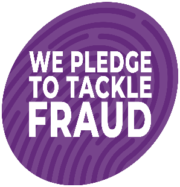Emotional First Aid and Mindfulness
In this article, we look at emotional first aid and techniques to help improve your well-being.
Wellbeing is not just the absence of disease or illness. It’s a complex combination of your physical, mental, emotional, and social health. Wellbeing is strongly linked to happiness and life satisfaction and could be described as how you feel about yourself and your life.
Wellbeing is important because:
- It can add years to life
- It is associated with positive health behaviours in adults and children
- Improves recovery from illness
In this article, we look at emotional first aid and techniques to help improve your well-being.
Emotional First Aid
Just like having a physical first-aid kit, filled with sterile dressings, anti-bacterial wipes, and gloves, you can also prepare yourself with an emotional first-aid kit!
Emotional First Aid is the idea that we should take care of emotional injuries when they occur, so they do not become more damaging in the long run; just like using plasters and antiseptic cream when you cut yourself!
The University of Rochester has a list of useful tools to keep in your emotional first aid kit:
- Awareness – Identify when you have been injured and are experiencing emotional pain. Know yourself and be mindful of any changes in your mood such as increased loneliness or depression.
- Redirection – When failure makes you focus on the negative, reframe the situation and think about what you can control, what you could do differently next time, and how you can plan for improved outcomes in the future. Find your control and ability to adapt instead of focusing on what you did wrong.
- Distraction – Replaying upsetting or negative experiences in your head can lead to worsened emotional health. Break the negative cycle by finding something to distract yourself with. Try the 5-4-3-2-1 Grounding Technique, work on a Sudoku or crossword puzzle or something that requires you to put your concentration elsewhere, even if just for a few minutes.
- Self-esteem – Notice when your self-esteem has taken a hit or you are putting yourself down. Fight rejection with self-compassion. What would you tell your friend if they were feeling the way you are right now?
- Find Meaning – Loss can be a particularly challenging wound to overcome. If you can find meaning, a new purpose, or a way your experience has made you grow or can benefit others, it may become easier to move forward.
- Acceptance – Being able to accept wrongs done to you, and wrongs you have done is key to good emotional health. If you are feeling ongoing guilt over something you have done, find acceptance by truly apologizing for this wrong, either to the person directly or on paper. Focus on the impact your action had, not on why you did what you did. If you have been wronged, find acceptance by focusing on letting go. Express your hurt and pain, but also what you want your life to look like moving forward and how you have grown from this hurt.
- Reflection – Learn from experience. Try each of these techniques out so you know if they help make you feel better. If these are not working for you, take the next step and find someone you trust to talk to. Always keep in mind that your emotional health is just as important as your physical health.
These TED Talks can be handy for when you or a loved one need help recovering from an emotional hit. Explore topics like emotional resilience, truth over positivity and the stigma that misreads depression as weakness. Videos include ‘The Gift and Power of Emotional Courage,’ ‘The Best Way to Help is Often Just to Listen,’ and ‘A Better Way To Talk About Love.’ You can find a playlist of these videos and others on the TED website.
Mindfulness
Mindfulness is the ability to be fully present, aware of where we are and what we’re doing, and not be overly reactive or overwhelmed by what’s going on around us.
Mindfulness practice can help reduce feelings of anxiety and keep you in the present. Mindful.org is a great place to start your mindfulness journey!
Whenever you bring awareness to what you’re directly experiencing via your senses, or to your state of mind via your thoughts and emotions, you’re being mindful. And there’s growing research showing that when you train your brain to be mindful, you’re actually remodelling the physical structure of your brain.
If you need assistance to start the practice, you can try a guided meditation app, for example, Headspace. Try just before bed to see if taking 5 minutes for yourself can improve your quality of sleep, setting you up for a calm and restful night.
Stress and Relaxation
Most people will never understand the stress that parents of children with complex needs will experience in their day-to-day lives.
Although they require time, there are exercises and resources that can help you relax and lower your stress levels. Even if the effect is only temporary, being able to de-stress can be beneficial to your mental health.
The Red Cross has some brilliant resources and exercises to help manage stress, with lots of instructional videos and tips. You can find them here.
You can explore different relaxation methods that can help you look after yourself when you’re feeling stressed or worried. The things you are stressed or worried about will not magically go away, but relaxation can give you a mental break from these feelings and help you refocus. Visit Mind’s website for some relaxation tips and exercises.
For further information about mindfulness and more wellbeing tips, visit the wellbeing section of our Information Hub.
Mindful Hydration
Water is capable of calming and grounding your mental state. The human body is 70% water, therefore it needs a regular supply to function properly.
For Mindful Hydration, you focus on the action of drinking to appreciate rehydrating your body. Take 2 minutes for yourself every hour or so and focus on drinking, while taking a moment to breathe.
How to drink mindfully:
- Pour a glass of water and observe how the water looks in the glass
- Take a sip and hold it in your mouth. Notice the feel and temperature of the liquid.
- Swallow the water with intent and feel the sensations in your throat. This changes the habitual act into a mindful and meditative experience.
Colouring for mindfulness
Colouring for Mindfulness has become more popular recently and it can relax you in the following ways:
- Colouring is simple – When your thoughts are focused on a simple activity you’re not disturbed by them and your brain can relax.
- It’s your creation – colouring is a low-stakes activity and is entirely within your control; colour however you like! Use unrealistic colours, and colour outside the lines; your piece can turn out however you choose and this makes it more relaxing.
Please find below designs for you and your children to use … I am partial to the dinosaurs myself! Relax and enjoy!
Meditate with Laura
Laura Sparrow runs her business Relax & Renew, which offers well-being & holistic therapies. Laura, who is also a Wellchild Parent Ambassador specialises in therapies for children with additional needs.
Having a child with complex needs herself, Laura understands the importance of wellbeing. Watch the video below to take part in a relaxing half-hour meditation session guided by Laura.
If you have any comments, ideas, or suggestions about this article don’t hesitate to get in touch with us at [email protected]
Please don’t forget to leave feedback by clicking the smiley face!
Kathy Gibson, Digital Information Officer
First published: October 2023
Next review due: October 2024




